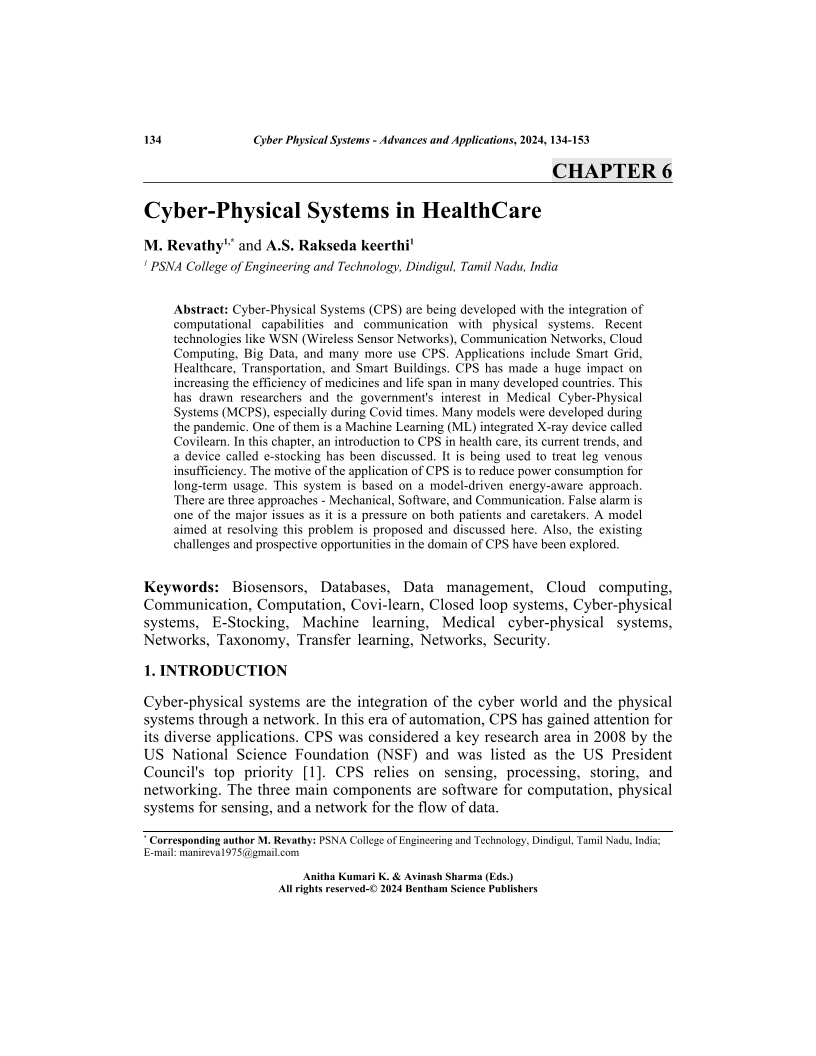Cyber-Physical Systems in HealthCare

- Authors: M. Revathy1, A.S. Rakseda keerthi2
-
View Affiliations Hide Affiliations1 PSNA College of Engineering and Technology, Dindigul, Tamil Nadu, India 2 PSNA College of Engineering and Technology, Dindigul, Tamil Nadu, India
- Source: Cyber Physical Systems - Advances and Applications , pp 134-153
- Publication Date: May 2024
- Language: English
Cyber-Physical Systems (CPS) are being developed with the integration of computational capabilities and communication with physical systems. Recent technologies like WSN (Wireless Sensor Networks), Communication Networks, Cloud Computing, Big Data, and many more use CPS. Applications include Smart Grid, Healthcare, Transportation, and Smart Buildings. CPS has made a huge impact on increasing the efficiency of medicines and life span in many developed countries. This has drawn researchers and the government's interest in Medical Cyber-Physical Systems (MCPS), especially during Covid times. Many models were developed during the pandemic. One of them is a Machine Learning (ML) integrated X-ray device called Covilearn. In this chapter, an introduction to CPS in health care, its current trends, and a device called e-stocking has been discussed. It is being used to treat leg venous insufficiency. The motive of the application of CPS is to reduce power consumption for long-term usage. This system is based on a model-driven energy-aware approach. There are three approaches - Mechanical, Software, and Communication. False alarm is one of the major issues as it is a pressure on both patients and caretakers. A model aimed at resolving this problem is proposed and discussed here. Also, the existing challenges and prospective opportunities in the domain of CPS have been explored.
-
From This Site
/content/books/9789815223286.chapter-6dcterms_subject,pub_keyword-contentType:Journal -contentType:Figure -contentType:Table -contentType:SupplementaryData105


